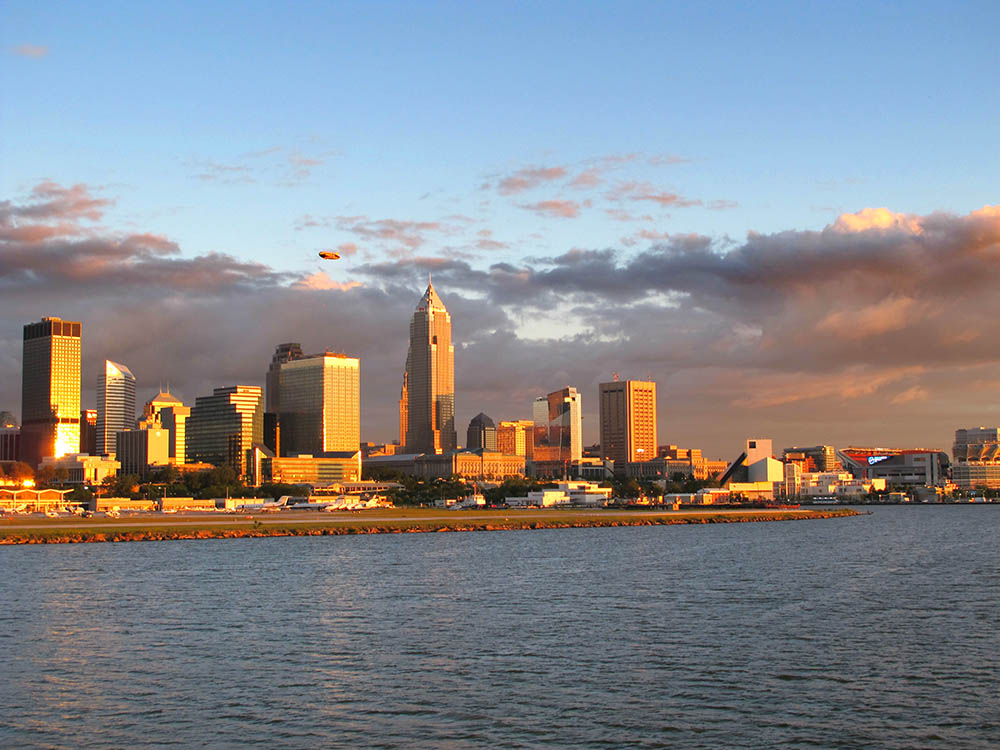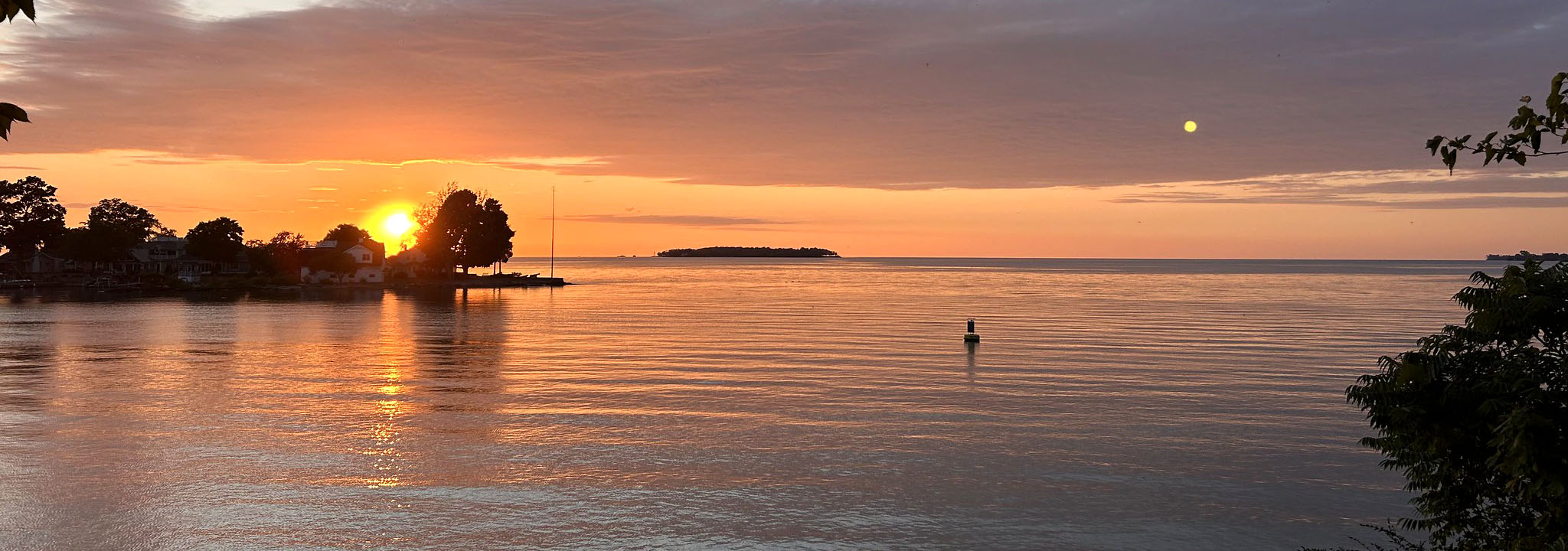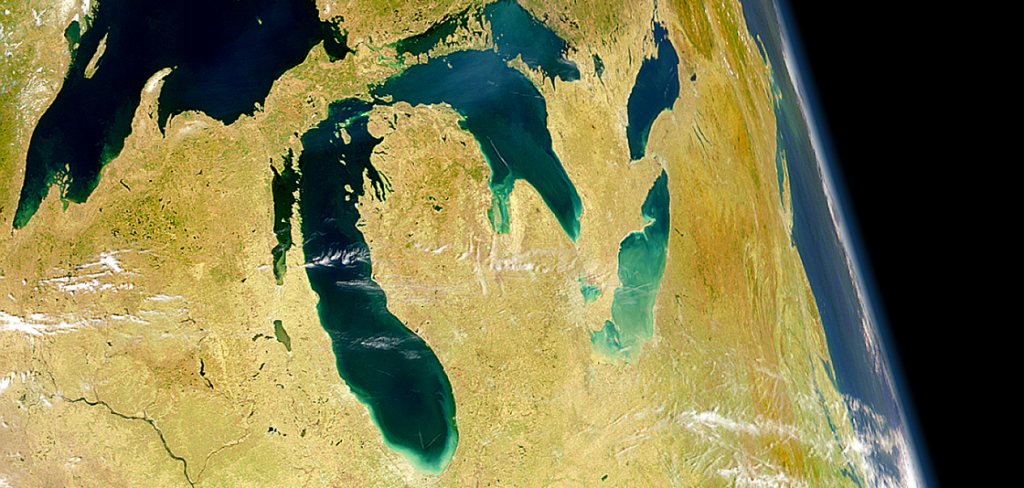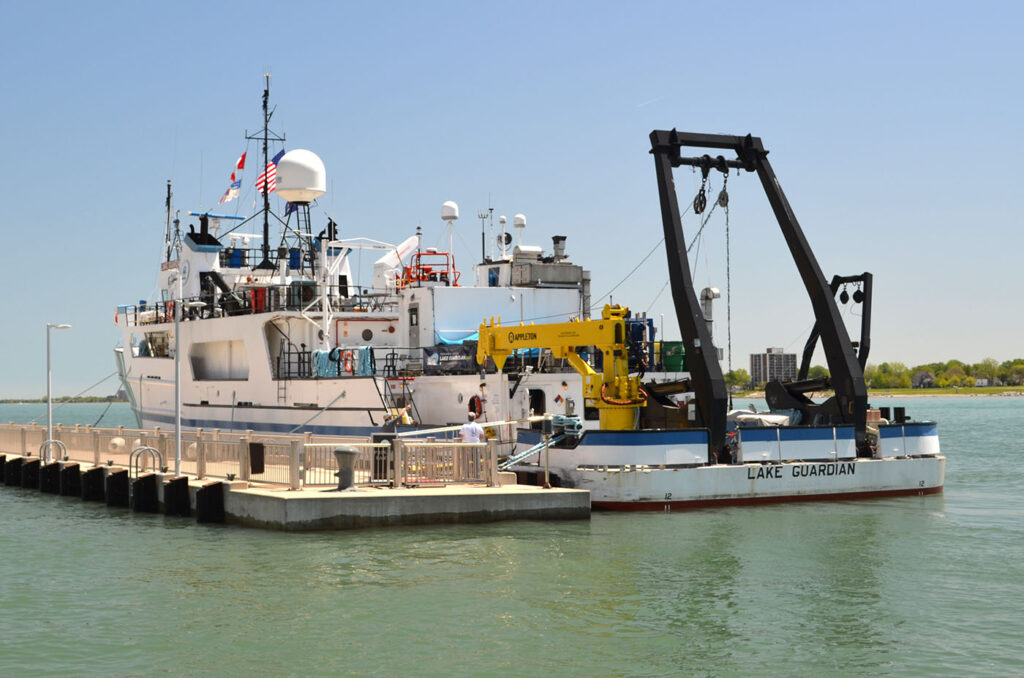Connections to Land and Water
Lake Erie is a shared resource between the United States and Canada providing many environmental, economic and social benefits. It borders the U.S. states of Michigan, Ohio, Pennsylvania, and New York, and the Canadian province of Ontario. The drainage basin includes portions of all of these regions along with a small area of Indiana.
Lakes are often described by their volume—the amount of water they contain—and their surface area—the space covered by water from all shores. Lake Erie holds the title of the smallest Great Lake by volume, yet it surpasses Lake Ontario in surface area, securing its position as the fourth largest Great Lake. On a global scale, Lake Erie ranks as the eleventh largest freshwater lake by surface area.
Lake Erie is the southernmost of the Laurentian Great Lakes. Its location and shallow waters contribute to it being the warmest among them. These warm waters foster conditions perfect for aquatic life, making Lake Erie the most biologically productive lake in the Laurentian Great Lakes system.
Lake Erie connects to 871 miles of shoreline. This shoreline includes at least 26 islands, although the exact count varies with water levels.
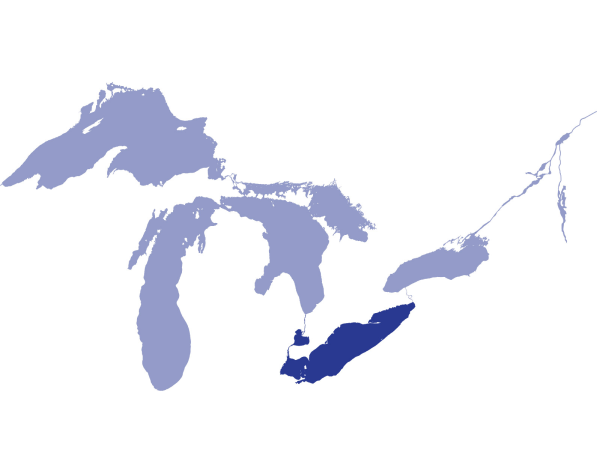

Lake Erie’s watershed includes many communities. All of the area shaded around Lake Erie drains into the lake.
The majority of Lake Erie’s water, approximately 80 percent, originates from the upper Great Lakes via the Detroit River, with ten percent coming from other tributaries and an additional ten percent from precipitation.
The outlets for Lake Erie are the Welland Canal and the Niagara River, with water flowing over Niagara Falls. A drop of water entering Lake Erie from the Detroit River will take only 2.6 years to reach Niagara Falls.
Lake Erie comprises three distinct basins: Western, Central and Eastern Erie Basins.
- The Western Erie Basin includes the popular Lake Erie islands, a favorite spot for fishers and tourists. Characterized by its relatively warm and shallow waters, the western basin has an average depth of less than 30 feet.
- The Central Erie Basin extends from the Cedar Point Amusement Park in Ohio and Pelee Point in Canada to the historic city of Erie, Pennsylvania, and Long Point in Canada. This basin has an average depth of 60 feet.
- The Eastern Erie Basin extends from Erie, Pennsylvania, to the east end of the lake. The cold, deep eastern basin has an average depth of 80 feet and bottoms out at over 200 feet deep.
Lake Erie: Fast Figures
- Shoreline length: 871 mi (1,402 km), including islands
- Length: 241 mi (388 km)
- Length is measured as the longest single direction across a lake. For Lake Erie, this path is east-west.
- Breadth: 57 mi (92 km)
- Breadth is the shortest cross-section distance across a lake. For Lake Erie, this path is north-south.
- Elevation: 569.2 ft (173.5 m) above sea level
- Average depth: 62 ft (19 m) measured at low water
- Maximum depth: 210 ft (64 m) measured at low water
- Volume: 116 cubic mi (484 cubic km) measured at low water
- Water surface area: 9,910 square mi (25,667 square km)
- Drainage basin area: 30,140 square mi (78,062 square km)
- This total includes the St. Clair-Detroit system.
- Outlets: Niagara River and Welland Canal
- Replacement time: 2.6 years
- Population in watershed: ~12.4 million people
- U.S. population: ~10.5 million people
- Canada population: ~1.9 million people
Connections to Stewards of the Lake
Indigenous peoples have long been stewards of Lake Erie (Waabushkiigoo gichigami), and they help ensure the lake’s life-giving resources remain abundant and cared for much like family. Traditional ecological knowledge (TEK) encompasses the dynamic relationship between all living things and the environment they share.
This knowledge continues to be passed from one generation to the next. Examples of TEK are the traditional teachings, way of life, and interwoven relationship of fishing, agriculture, land management, cultural values, oral history and connection to land. An example of traditional teaching is that in addition to all the beings in and around the water, the waters themselves are considered relatives.
Today, many people live, work, and play in the Lake Erie watershed. Tourism and fishing, both recreational and commercial, are important elements of the Lake Erie economy. Additionally, Lake Erie houses several major ports serving the nation and the world.
Great Lakes Sea Grant Network partners, through CGLL, support educators engaging youth in Lake Erie stewardship with professional learning and resources. By working together, our collective efforts can help protect Lake Erie.
References
Environmental Protection Agency. (2023). Physical Features of the Great Lakes. | Link
Hecky, R.E., Dobiesz, N., Axler, R.P., Host, G.E., Brown, T.N., Will, N., & Hagley, C. (2014). Global Great Lakes: Integrating yesterday, today and tomorrow and transforming environmental data into anticipatory ecosystem management. University of Minnesota Duluth. | Link
NOAA. (2024). Lake Erie. National Marine Ecosystem Status. | Link
Huntley, M., & Lichtkoppler, F.R. (2006). Lake Erie Facts. Ohio Sea Grant. | Link
Schroeder, B., O’Keefe, D., & Dann, S. (2019). The Life of the Lakes: A guide to the Great Lakes fishery. (4th Ed., pp. 20). University of Michigan Press. | Link
CGLL Partners Serving the
Lake Erie Watershed
If you teach or learn in the Lake Erie watershed, our CGLL Sea Grant educator team is eager to collaborate with you! The Ohio, Pennsylvania, New York, and Michigan Sea Grant programs offer leadership, educational programs, and resources tailored to Lake Erie.

